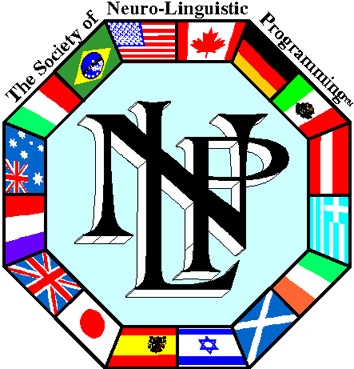NLP Language Patterns
Distortion - NLP secret
Distortion Generally
NLP language patterns in the Meta Model consist principally of deletion, distortion and generalisations.
Distortion twists the truth in that the speaker draws conclusions or makes assumptions.
By his statement he appears to know the truth about what another person or other people think, feel or believe.

The most dangerous of all falsehoods is a slightly distorted truth
Lichtenberg
It is easy for someone to believe that his or her distorted belief is the truth rather than one’s own perception because they have compared it with their own map of the world and decided it is so.
I have argued with opposing counsel and
judges in court on many occasions, each of us asserting that a witness
has said this, that or the other.
When the record has been checked with the court stenographer, it is quite apparent that each of us has interpreted the witness’s words differently, that is to say against our internal map of events.
Mind Reading
Mind reading often causes considerable pain and distress to the individual in personal, social or business situations. We have probably all been guilty of it at some time or another. We believe we know what someone else is thinking.
“I know he hates me”
Questions to ask: How do you know he hates you?
The answer to that might be: “Because he doesn’t call me any more.”
Questions to ask: Why does it follow that he hates you because he doesn’t call you any more?
NLP Language Patterns – Lost Performative
A lost performative occurs when a value judgment is made without saying who made the judgment:
Sensible people agree that all children should dress smartly”
Questions to ask: Sensible according to whom? How do you know they are sensible? How do you know children should dress smartly?

NLP Language Patterns – Nominalisation
Nominalisation occurs when a verb is made into a noun which makes it appear like a thing rather than an action:
“We need more communication”
Questions to ask: How would you know if you had it? What does it look like? How does it feel? (A better statement would have been “We need to be able to communicate more effectively).
NLP Language Patterns – Cause and Effect
The use of such words as: because, if, then, makes, drives, compels, causes.
It is believed that a specific action will cause a particular effect. It is believed that X causes Y and the events are in some way joined together. It is believed that one person’s actions are the sole cause of another’s response or reaction. For example, “The way he looks at me drives me wild.”
Questions to ask: How exactly does the
way he looks at you drive you wild? What happens when he looks at you
that drives you wild?
“I was going to speak up but I knew that it wouldn’t make any difference.”
Questions
to ask: Wouldn’t have made any difference to what? How do you know
that speaking up wouldn’t have made any difference? Why would speaking
up not have made any difference?
“Your comments made me upset.”
Questions to ask: How exactly did what I say make you feel upset?
NLP Language Patterns – Complex Equivalence
The use of words such as: means, therefore, implies.
This is when two statements are joined or linked thereby giving them the same meaning.
“His letter was so short, he must be angry with me.”
Questions
to ask: How does writing a short letter indicate he is angry with you?
What other explanations might there be for writing a short letter?
“She didn’t wave to me when I saw her across the street this morning so she is ignoring me.”
Questions
to ask: How does not waving indicate that she was ignoring you? What
other explanations might there be for not waving? How exactly is not
waving connected to ignoring you?
NLP Language Patterns – Presuppositions
They presuppose that something is true in order to understand the sentence.
“How many times did you beat your wife last night?”
Questions to ask: What makes you think I
am married? How do you know I was with my wife last night? What makes
you think I beat my wife at all?
“Shall we meet at your place or mine?”
Questions
to ask: Do we need to meet at all? Do you have a place? What makes
you think we should meet at one of those places and not somewhere else?
If you have not done so already, now would be a good time to read about the Meta Model, Deletion and Generalisation.
Gain FREE access to my self-confidence video
To gain free access to my self-confidence video enter your email address and first name in the box below. This will also keep you up-to-date with my free newsletter Inspirations.
As a bonus for subscribing you'll receive the first three chapters of my book Towards Success, where you can learn more about NLP techniques, from Anchors to Modelling, and my 50 favourite inspirational quotations.
Return from NLP Language Patterns - Distortion to
The Secret of Mindpower & NLP Home
Return to Site Search & Contents Page

Change your life in just 5 weeks
Discover the pathway to success with my online video course. Learn more

Download NEW ebook Your Genius Within and find out how to uncover your own inner genius

NLP Articles
- Anchors
- Anchors explained
- Anger Management tips
- Anxiety Panic Attacks
- Beating disappointment
- Beating drug addiction
- Best self-help book
- Big events
- Body control module
- Body language attraction
- Body language flirting
- Body language in communication
- Body language interpretation
- Body language of a liar
- Body language signs
- Boost self-confidence
- Building Rapport
- Changing bad habits
- Changing beliefs
- Changing States
- Children
- Christmas (Holidays)
- Christmas & New Year greetings
- Chronic pain management
- Conquering Fear
- Crohn's Disease
- Cure for a Phobia
- Deal with your fear
- Deletion
- Determining your destiny
- Developing your senses
- Disaster to Triumph
- Distortion
- Drawing the line
- Embedded Commands
- Enthusiasm
- Exams
- Expecting the Best
- Expert Relationship Advice
- Eye accessing cues
- Fear of driving
- Fear of elevators
- Fear of flying
- Fear of the dentist
- Fear of vomiting
- Fear, Mental Blocks & Hesitation
- Fear, Uncertainty and Doubt
- Fight or flight response
- Finding Solutions
- Forever Worried?
- Friendly persuasion
- Generalisation
- Get the life you want
- Getting lucky
- Getting over your past
- Goal Setting Tips
- Goal Setting Tools
- Goal Setting Tools, More
- Great self-help books
- Grief
- Happy retirement
- Healthy Mind
- High blood pressure
- How long will I live?
- How to be lucky
- How to read body language
- Hypnosis & NLP
- Hypochondria
- Imagining perfect performance
- Improving speed reading
- Instant Mood Lift
- Interviews
- Knowing yourself
- Learn NLP
- Life Values
- Maintaining weight loss
- Make you thin
- Making it happen
- Managing change
- Meddling Mom
- Meeting People
- Mental rehearsal techniques
- Meta Model
- Metaphor
- Modelling
- Modelling Genius
- More NLP techniques for weight loss
- NLP Books
- NLP Courses
- NLP Practitioner Course
- NLP Master Practitioner Course
- NLP Secret
- NLP jargon buster
- NLP Modelling helped me
- OCD symptoms
- OCD treatment
- Overcoming low self-esteem
- Overcoming stage fright
- Pacing & Leading
- Persuasion
- Presuppositions
- Presuppositions (2)
- Problem solving
- Public Speaking
- Reaching agreement
- Reframing
- Self-confidence
- Self limiting beliefs
- Self-image
- Sportsmen Guide
- Stage fright tips
- Stammering
- States
- Stop binge eating
- Stop Smoking
- Subliminal Persuasion
- Success Principles
- Techniques for persuasion
- Techniques for weight loss
- The meaning of NLP
- Time & NLP
- Towards
- Towards & Away
- Ulcerative colitis
- Weight Loss
- Weight loss techniques
Articles on HYPNOSIS:
- Big events
- Conversational Hypnosis
- Covert hypnosis
- Deepening self-hypnosis
- Depression Hypnosis
- Handshake interrupt
- How to do self-hypnosis
- How to hypnotise your audience
- Hypnosis and Weight Loss
- Hypnosis NLP
- Hypnosis: Right or Wrong
- Hypnosis Stories
- Hypnotic language
- Hypnotism Stories
- Hypnosis story for you
- Hypnosis to quit smoking
- Instant self-hypnosis (age regression)
- Practical self-hypnosis
- Self-Hypnosis
- The Milton Model
Articles about THE SECRET of:
- Abundance Mentality
- Achieving more
- Beating Domestic Violence
- Being bothered
- Being Happy
- Best Self-help Book
- Conquering road rage
- Coping with criticism
- Dealing with pride
- Defeating stress
- Discover the secret of wealth
- Genius
- Getting off to sleep
- Getting over a break up
- Getting over your temper tantrum
- Health
- How to deal with grief
- Imagination
- Influence
- Love
- Making Money
- Managing others
- Memorising a Deck of Cards
- Memory
- My Success
- Organising Memory
- Overcoming tiredness
- Overcoming worry
- Perpetual energy
- Remembering
- Secret Law of Attraction books
- Sleeping well
- Speed Reading
- Super Memory
- Surviving a recession
- Surviving negativity
- The Secret Law of Attraction
- Towards
- Teachers of the Secret
- Waiting for God
- Wealth Building
- Weight Loss
Articles on GENIUS and MIND POWERS:
- Activating genius
- Become a genius
- How long will I live?
- Mind Powers
- Misty Reflections
- Modelling Genius
- The Secret of Genius
Articles about COACHING:
- Barriers to effective communication
- Communication
- Executive Business Coaching
- Feedback
- Free interview tips
- Free Life Coaching
- Goal Setting Tips
- Goal Setting Tools
- Goal Setting Tools, More
- Life & Executive Coaching
- Personal Development Plan
- Problem solving
- Success Principles
- The Secret of my Success
- Time Management
Articles about RELATIONSHIPS:
- Beating domestic violence
- Body language flirting
- Expert relationship advice
- Healthy family relationships
- Hurt feelings
- Love
- Relationship problem advice
- Signs of true love
- The secret of getting over a break up
Articles on WEIGHT LOSS:
- Best Weight Loss Plan
- Body control module
- Easy weight loss
- Hypnosis and Weight Loss
- Maintaining weight loss
- More NLP techniques for weight loss
- NLP techniques for weight loss
- NLP techniques to make you Thin
- NLP weight loss techniques
- Stop binge eating
- The Secret of weight loss
- Weight control help
- Weight loss tips
- Why have I lost weight?
Articles on WEALTH:








New! Comments
Have your say about what you just read! Leave me a comment in the box below.